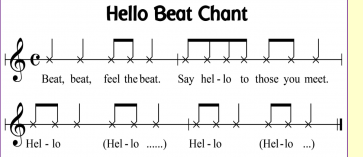Name Games and Activities to start the school year
|
Some music teachers teach more than a thousand students each week and it can be very difficult to remember the names. Starting your first classes with a name game will help you to remember those names – at least for this music class! If you go the Back to School Unit in Units at www.Musicplayonline.com, there are many name games AND mixers to get your school year off to a great start. |
|
|
Name Games: |
Mixers: |
For your olders:
Number Concentration |
|
|
|
Give every student in the class a number on a white paper plate or index card. (You may want to organize a seating plan, and give them the number that they will have in the plan.) The teacher sings a number, and that student sings back his/her name. As you sing, tap a beat with one finger. Each time that a student forgets to sing on his/her number, choose a new tempo. When the students are familiar with the game, you can play this as an elimination game—if you don’t respond with your name after your number is sung, you go out. Invite students to be leaders and sing the numbers. The paper plate idea was suggested by a teacher from a district where she has really large classes. The paper plates help her students to remember what number they’re given and has made the game really successful for her. Number Concentration is a simple reading using just so-mi-do and ta, ti-ti, rest. If your students can read the rhythms and pitches, have them learn the song by reading it. If they aren’t there yet, just read the rhythms, and teach the melody by rote. Because it’s a simple reading song, it’s an excellent opportunity to review beat and rhythm with your students using the interactive rhythm tools and/or the matching worksheets. Use the interactive tool to model how to create an ostinato, B section, or introduction/ending for the song. The game is fun, and can be extended in many ways! |
Go to Interactive Rhythm section, and select Word Rhythm Composition:
 |
 |
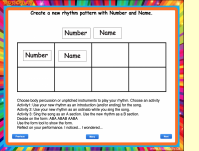 |
Model how to create a rhythm composition with the words “Number” and “Name”. Choose two kinds of body percussion and perform your new pattern. Try other ways of doing the body percussion and decide which you like the best. Transfer the body percussion to unpitched instruments and decidewhich you like the best. After modeling, give the students sets of “Number” and “Name” cards made up from the Printables in this section and have small groups of students create their own rhythm composition.
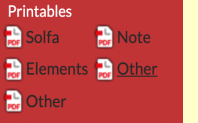 |
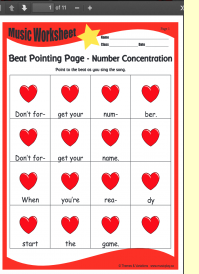 |
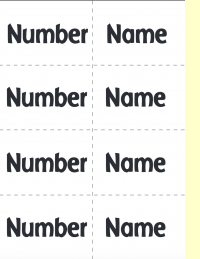 |
| Students lay their pattern out on the floor. They choose 2 kinds of instruments and play the pattern. Use the song as the theme, and student compositions as B, C, D, E sections and create a rondo. Do a group practice. Ask them to refine their composition – maybe add some dynamics, or add some movement. Perform. Ask groups to think of what they “noticed” and “wondered” about their performances. (reflect on performance) | 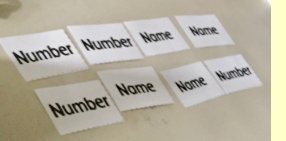 |
Many additional extensions are possible for the game – there are 11 worksheets given, and matching interactive activities so you can teach or model how to label beat and rhythm, then practice and reinforce.
Here’s a link to see how the Word Rhythm Composition might sound.
https://youtu.be/RQ5IP8vUdXM
For your littles:
Hello Beat Chant |
|
|
|
Source: Rhythm Instrument Fun, and in Musicplay PreK 1. Say the chant, patting a steady beat as you speak. Say hello to the students using different kinds of voices: high/low, loud/quiet, fast/slow, speak/sing/whisper/shout, singing voice using a variety of solfa patterns. After you say the name, the class echoes, saying the name just like you did. 2. In the next lesson, instead of patting the steady beat, play the beat on a non-pitched instrument. Ask the students questions about the instrument 3. Demonstrate how to hold the instrument and how to play it before playing along with the chant. You may want to have the students play some instruments. If you have a tambourine or hand drum, you could hold it, but have the children tap it. This is an excellent way to introduce all of the non-pitched |
Looking for more ideas and icebreaker games for your classroom? MusciplayOnline has a plethora of songs you can use with your new and returning students! Search terms like “Name games”, “shakeups”, “brain teasers”, “openers”, “warmups”, “organizers”, and “cumulative”.
We love to know how you’re using our materials!!! Share the name games that you’re using in your classroom in the Musicplay Teachers group on Facebook! If you don’t do Facebook, share in the forum at Musicplayonline.




